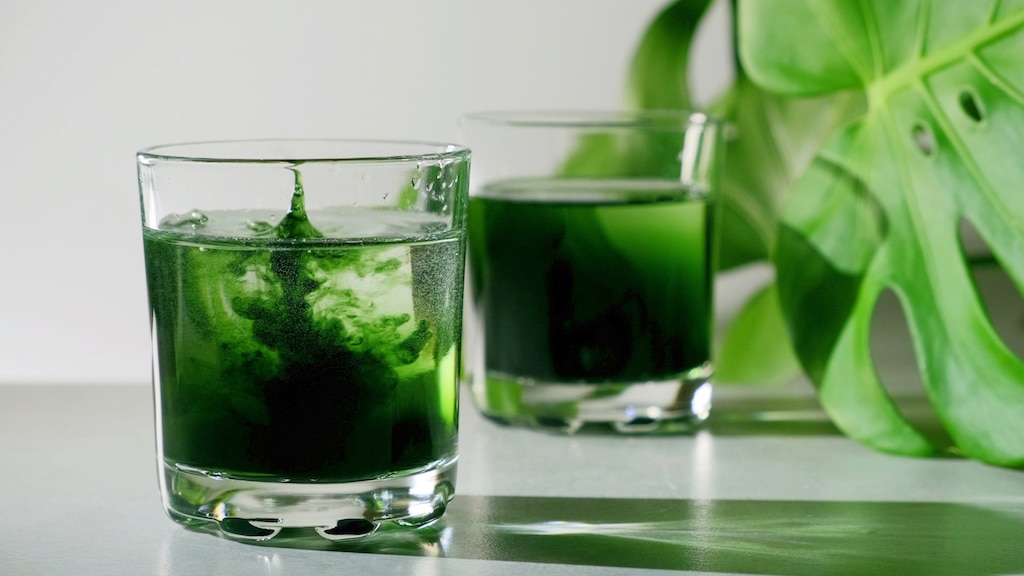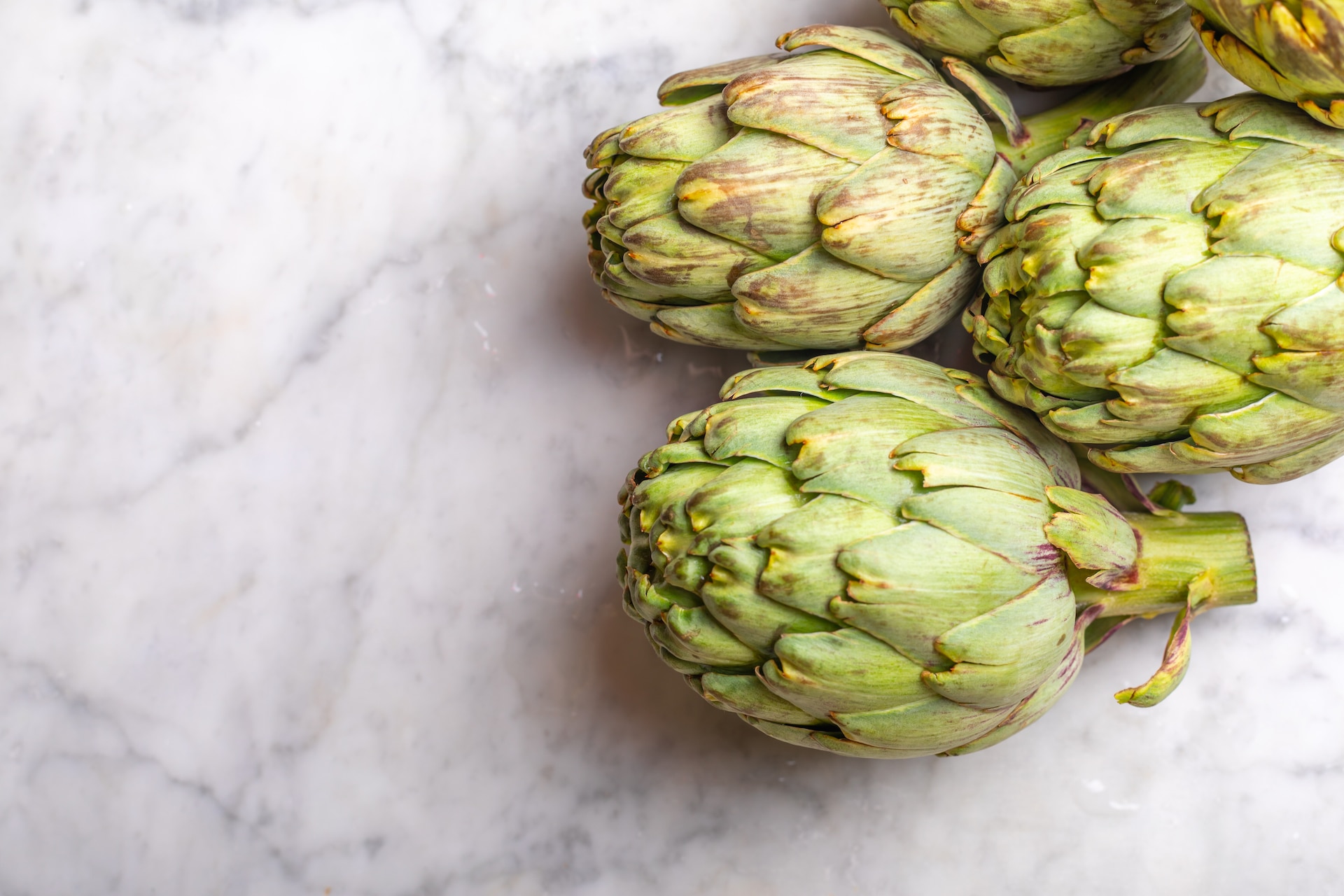Chlorophyll Fact Vs. Fiction: What You Need to Know About This Health Trend
Home » Eat Empowered » Chlorophyll Fact Vs. Fiction: What You Need to Know About This Health Trend
You probably learned about chlorophyll back in middle school science class. Remember? Chlorophyll is the pigment that gives plants their green color. It helps plants to absorb energy from the sun during photosynthesis.
But what does that have to do with your health and wellness? Well, like other compounds that give plants their color, chlorophyll is loaded with antioxidants. And antioxidants do all sorts of great stuff, like fight inflammation and help prevent disease. Yep! Regularly eating a variety of antioxidant-rich foods may lower your risk of certain cancers while also boosting your heart, brain and skin health. Not too shabby, right?
RELATED: What Are the Health Benefits of Antioxidants
But back to chlorophyll. You can get chlorophyll from plants and supplements. Some chlorophyll-rich plant foods include spinach, parsley and broccoli. If you’re looking to amp up your antioxidant game even more, you might consider taking a chlorophyll supplement.
In supplement form you’ll find chlorophyll as chlorophyllin, which is a derivative of chlorophyll that is potentially better absorbed. You may see it on the label as sodium copper chlorophyllin.
Chlorophyll is Having its Social Media Moment
The hashtag #chlorophyll has racked up more than 200 million views on social media. All this recent hype can probably be tracked back to TikTok and Instagram because chlorophyll not only has a lot of potential health benefits, but it looks pretty! And, best of all, it’s easy to incorporate into a healthy routine.

Like with any health trend, there are a lot of claims about chlorophyll flying around out there. So let’s see if we can break them down between fact and fiction, evidence and anecdote.
People tout chlorophyll for the following benefits:
- Detoxing
- Boosting energy
- Clearing up skin/wound healing
- Improving constipation
- Preventing cancer
Can Chlorophyll Do All This?
Boosting your antioxidant intake and killing off those cell-damaging free radicals is one thing, but can chlorophyll live up to all its other hype? Let’s take a look claim by claim.
Detoxing
There’s little data to date supporting chlorophyll’s role in supporting our detox pathways. However, there are a couple of small studies linking an improvement in body odor with chlorophyll consumption.
Boosting Energy
If you’re taking a chlorophyll supplement and hydrating, the antioxidants could make you feel more energized. There’s no scientific literature on this but we definitely know about all the wonders of good hydration and how it can lead to feeling more energized.
Clearing Up Skin and Healing Wounds
There are a couple of small studies that link topical chlorophyll with improving acne and reducing the damaging effects of the sun. Great news! But that’s not all. Since the late 1950s, chlorophyllin (a synthetic version of chlorophyll mentioned earlier) has been added to some topical skin ointments that are used to promote wound healing while also reducing inflammation in the area, and controlling odor. Several studies have reported that these ointments work.
Improving Constipation
There’s very little scientific literature about the ability of chlorophyll to resolve gastrointestinal issues, constipation, metabolic disorders and more. Anecdotally, there are some claims that chlorophyll helps with weight loss, but there are not yet any large studies to confirm this.
Preventing Cancer
There is some evidence of chlorophyll decreasing the body’s absorption of a toxin that’s linked to an increased risk of developing liver cancer. There’s also some data tying the use of liquid chlorophyll to treat pancreatic cancer.
Is Chlorophyll the Same as Chlorella?
Some people equate chlorophyll with chlorella, but they’re not the same thing. Chlorella, which can be found in algae, is a good source of chlorophyll — along with protein, fat, carbs, fiber, vitamins and minerals! Sounds pretty amazing! But chlorella is not without its concerns and precautions. If you’re on a blood thinner, such as warfarin (Coumadin) or apixaban (Eliquis), chlorella might make it harder for them to work. And some chlorella supplements may contain iodine. So if you’ve got an iodine allergy, make sure to check the label.
Is Chlorophyll Safe?
While the jury is still out on all the potential benefits of chlorophyll, the possibilities of this supplement are intriguing. So does that make drinking a chlorophyll supplement a good thing? And are there any risks to taking chlorophyll supplements?
As with most supplements, it’s important to talk to your doctor first to see if chlorophyll is right for you. And remember, it’s a supplement, not a replacement for your greens. Bottom line: It’s generally safe, but not a miracle either.
(Images: Shutterstock)
The Nutritious Life Editors are a team of healthy lifestyle enthusiasts who not only subscribe to — and live! — the 8 Pillars of a Nutritious Life, but also have access to some of the savviest thought leaders in the health and wellness space — including our founder and resident dietitian, Keri Glassman. From the hottest trends in wellness to the latest medical science, we stay on top of it all in order to deliver the info YOU need to live your most nutritious life.
RECENT ARTICLES

Want a sneak peek inside the program?
Get FREE access to some of the core training materials that make up our signature program – Become a Nutrition Coach.
Get Access Eat Empowered
Eat Empowered












































































































































































































































































































































































































































































































































































































































































































































































































































































































































































































































































































































































































































































































































































































































